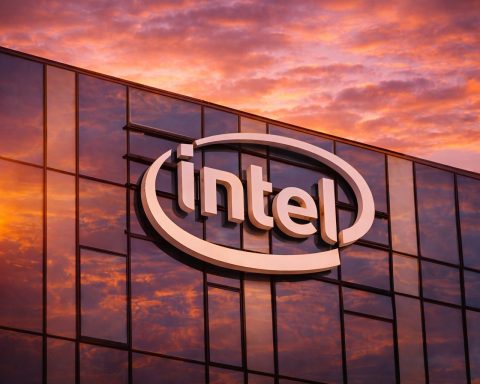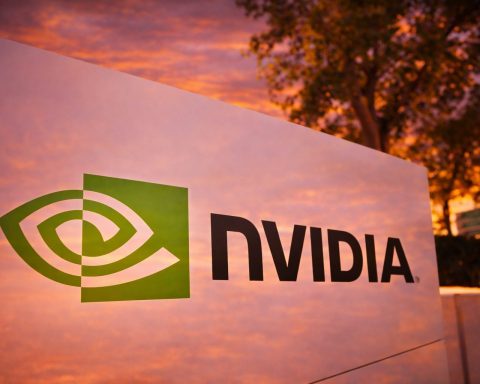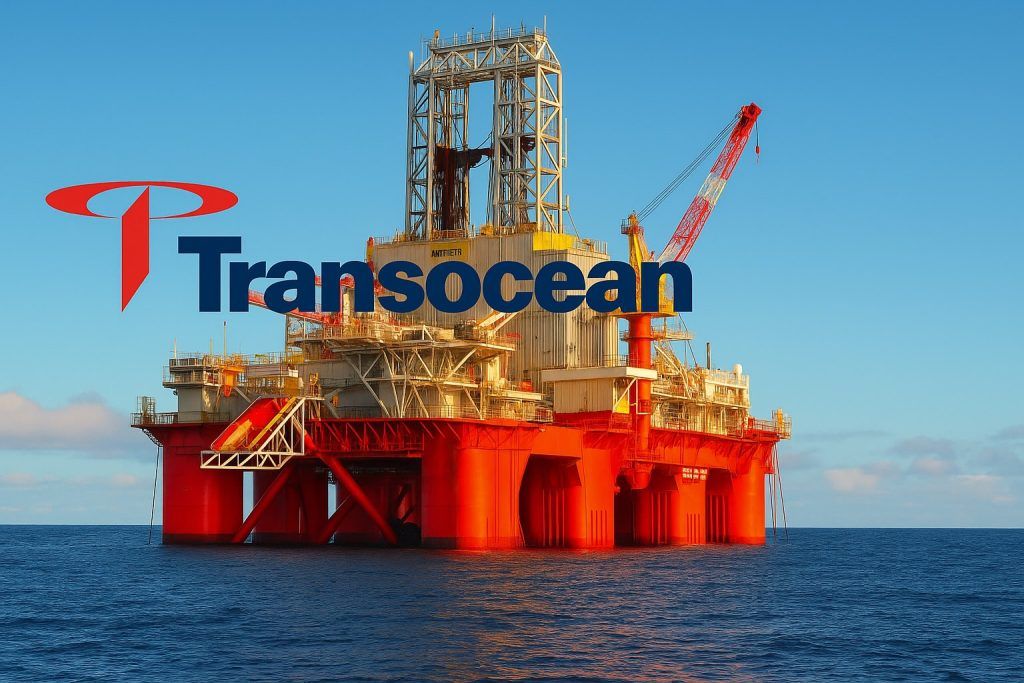- Stock Performance: DNN is trading around $2.65 (NYSE American) as of Oct 22, 2025 [1], roughly double its level at the start of 2025. Shares have climbed over 100% year-to-date, far outpacing major indices [2] [3]. The 52-week range is ~$1.08–$3.42 [4], with intraday swings of 10–15% common amid volatility.
- Uranium Boom: Global uranium prices recently hit multi-year highs – spot uranium topped ~$83 per pound in early Oct 2025 [5], the highest since 2011. This historic surge has powered a rally in uranium equities. Denison’s stock gains closely track the sector: one analysis notes that Denison “offers high leverage to uranium price increases,” as each uptick improves the value of its projects [6] [7].
- Production Restart: In July 2025 Denison’s McClean Lake joint venture (22.5% Denison, 77.5% Orano Canada) resumed uranium mining using the innovative SABRE borehole method [8]. The JV reported roughly 250 tonnes of ultra-high-grade ore (>10% U₃O₈) recovered from the first SABRE cavity [9]. Denison CEO David Cates called this “a significant milestone” – it is the JV’s first active mining since 2008 [10]. (Denison will begin marketing its share of yellowcake in coming quarters.)
- Wheeler River Approvals: Denison’s flagship Wheeler River project (95% Denison) is nearing the finish line. Saskatchewan granted provincial approval for Wheeler’s Environmental Assessment in mid-2025 [11]. Federally, the Canadian Nuclear Safety Commission has scheduled public hearings for Oct. 8 and Dec. 8–12, 2025 [12] on Denison’s Phoenix ISR (in-situ recovery) deposit – the final step before a construction license. Denison expects, if all goes well, to begin site prep in early 2026 and target first production by ~2028 [13].
- Other Projects: In Oct 2025 Denison published an updated study for its Midwest uranium deposit (Denison 25.17% JV stake). The preliminary economics are eye-catching: ISR mining costs of only ~$11.70 per pound and after-tax IRR >80% for Denison’s share [14]. This high IRR suggests strong upside even at modest uranium prices. Denison has also been earning into additional exploration ground (via a Cosa Resources JV), and it recently increased its stake in emerging explorer Foremost Clean Energy to ~19% [15].
- Financing & Balance Sheet: To fund its growth, Denison recently bolstered its balance sheet. In August 2025 it closed a US$345 million convertible note (up from $300M) to finance Wheeler River construction [16]. It had already raised ~$50M in 2023 and secured a $75M credit facility earlier in 2025. With these funds plus existing cash, Denison appears well-capitalized for the near term.
- Analyst Ratings: Wall Street is overwhelmingly bullish. Five research firms (Scotiabank, TD, Raymond James, Desjardins, etc.) all rate DNN a “Buy”/“Outperform” [17]. Market data show a consensus 12-month price target of roughly C$2.75 (≈US$2.00) [18], implying further upside. Notably, Desjardins Capital Markets has set a C$5.00 target (about US$3.65) [19]. Institutional investors are loading up – several funds have raised their stakes sharply in recent quarters.
- Short-Term Forecasts: Technical models and analysts see room to run. For example, one trend-based analysis projects another ~30–45% rise for DNN (to roughly $3.7–$4.7) by early 2026 if uranium prices stay strong [20]. TickerNerd (a consensus tracker) compiles a median 2026 target of $3.75 [21] (about +28%). This aligns with ongoing positive momentum, assuming Denison meets its development milestones.
- Market Tailwinds: The broader uranium market remains exceptionally supportive. Primary mine production (~130M lbs/year) still falls far short of reactor demand (~180M lbs) [22], a structural deficit that is expected to persist. Utilities have already secured only about 70–75% of their near-term fuel needs [23], forcing them into a furious contracting effort. Geopolitical factors – e.g. Russia’s reduced involvement and supply from Kazakhstan – add to scarcity. In fact, analysts note that junior miners like Denison “are experiencing renewed investor interest” because higher prices make uneconomical deposits viable [24]. Additionally, global policy is pivoting toward nuclear: over 30 countries have pledged to triple nuclear capacity by 2050 [25], and even the U.S. has mobilized under the Defense Production Act (an Oct 2025 DOE meeting) to boost domestic nuclear fuel supply [26].
Stock Performance and Catalysts
Denison’s stock chart tells the story of a nuclear-driven rally. After spending much of 2024 near $1.00–$1.20, DNN began climbing sharply in mid-2025 alongside the uranium price. By late September it briefly traded above $3.30 intraday [27]. Even after some profit-taking, the stock remains near all-time highs: at ~$2.65 on Oct 22 [28]. As one bulletin observed, Denison’s YTD gain now “vastly outperforms broader indices” [29]. This surge tracks exactly with the commodity: spot uranium leapt past $83 in early Oct, a level not seen since the last nuclear bull market [30].
Investors point to Denison’s recent news flow as justification. Starting production at McClean Lake via the new SABRE borehole technique is a concrete step for a previously development-only miner [31]. Likewise, Wheeler River’s greenlight progress is critical. Denison reports that Saskatchewan has granted Wheeler’s provincial permits [32] and the federal hearings are slated for Oct 2025 [33]. CEO David Cates emphasizes that these milestones “de-risk” the company’s pipeline [34]. The combination of actual ore production (even if modest initially) and the coming of Wheeler River has convinced many that Denison is transitioning into a producer. This narrative – plus the booming uranium price – has drawn fresh capital into DNN (and uranium ETFs that include it).
Nuclear Market Trends and Geopolitics
Denison’s upswing coincides with a resurgent nuclear power cycle. After a decade of stagnant or oversupplied uranium markets (post-Fukushima lows), 2025 has seen a structural crunch emerge. Primary production (~130M lbs) still misses demand (~180M lbs) by roughly 50M lbs [35], a gap only widened by inventory drawdowns. Spot prices have reacted violently – in October 2025 fuel contracts have traded around $83–$90 per pound [36] [37]. Analysts attribute this to underinvestment in new mines (development lead times of 10–15 years [38]) and rising consumption. Many governments have reaffirmed nuclear power as part of their climate and energy security plans: an industry report notes 30+ countries aiming to triple nuclear capacity by 2050 [39]. Tech and AI growth is also cited as a future demand driver.
On the supply side, geopolitical factors are tightening the market. Kazakhstan (≈43% of global supply) and Russia’s enrichment capacity have come under pressure – Kazatomprom itself announced a 10% output cut for 2026 [40]. Sanctions and political unrest in uranium-producing regions (e.g. Niger) are raising concerns. Even utilities are feeling the pain: roughly 25–30% of their 2025 needs remained uncontracted, prompting a scramble for long-term deals at high prices [41]. Governments are responding – for example, the U.S. DOE launched a Defense Production Act consortium in Oct 2025 to strengthen domestic fuel supplies [42]. In this environment, investment is flooding the junior mining sector. MarketMinute (Oct 2025) notes that Denison and peers “are poised to capitalize on the multi-year structural deficit” as higher prices render many projects viable [43] [44].
Analyst Views and Price Outlook
Financial analysts are broadly positive on DNN, but they differ on pace of gains. Major Canadian banks and brokers (Scotiabank, TD, National Bank, Raymond James, etc.) have affirmed Buy/Outperform ratings through 2025 [45]. MarketBeat data shows all five coverage analysts rating it a Buy, with an average 12-month target of C$2.75 (about US$2.00) [46]. Notably, Desjardins Capital Markets’ Bryce Adams has maintained a C$5.00 target [47] (~US$3.65), arguing the combination of higher uranium prices and project milestones justifies premium valuation.
Quantitative forecasts also suggest room to run. The consensus of Wall Street models gives a median 2026 price around $3.75 [48] (≈+28% from current levels). Even more optimistically, one technical analysis projects ~45% upside by early 2026 (to roughly $3.7–$4.7) if the uranium bull persists [49]. These views hinge on expectations that Denison will meet milestones (e.g. Wheeler permits) and that uranium stays strong or rises further (some forecasts are already flirting with $90–$100/lb by year-end [50] [51]).
However, analysts also caution on valuation and execution risk. Denison remains pre-revenue (aside from the small McClean output) and is currently losing money. Its trailing P/E is deeply negative and price/book is well above peer levels [52]. Simply Wall St analysts warn that “weak financials, unprofitability [and] high valuation multiples” are major risks [53]. In other words, much of the stock’s 2025 gains already price in the good news. Any delays in project approvals or funding – or a reversal in uranium prices – could quickly dent the stock. Investors note that Denison still needs hundreds of millions of dollars to build Wheeler, and any new equity raise could dilute current shareholders unless structured carefully.
Near-Term Outlook and Long-Term Promise
In the near term (weeks to months), DNN’s fortunes will largely track uranium prices and the Wheeler River hearings. A favorable CNSC report from the Oct-Dec 2025 hearing would remove the last major regulatory hurdle and likely send the stock higher. Conversely, a delay or softer uranium demand (global economic slowdown, for example) could trigger volatility; a 10–15% pullback in mid-Oct 2025 illustrated how sensitive DNN can be to market jitters [54]. Investors will also watch for financing news – strategic alliances or project funding deals could be catalysts.
Looking further out, bulls point to Denison’s large, high-grade Athabasca Basin deposits as a source of major upside. If the Phoenix ISR mine comes on stream by ~2028 (as aimed) and uranium remains strong, Denison could transition from a junior explorer into a mid-tier uranium producer. In that scenario, its valuation could expand dramatically. Indeed, Denison’s management stresses this “once-in-a-generation” opportunity. As one industry note observes, Denison’s story – like the sector’s – is tied to both project execution and the broader nuclear cycle [55]. If it delivers on Wheeler and the uranium bull persists, many analysts believe DNN could justify multi-bagger returns. Even so, most concur that patience is required: uranium cycles run in decades, and any forecast must assume continued policy support and contracting by utilities [56] [57].
Sources: Company press releases and filings [58] [59] [60]; financial media and analysis (TS2.tech, MarketBeat, Financial Content, etc.) [61] [62] [63] [64]; industry reports on uranium market trends [65] [66] [67]. These sources provide the latest data and expert commentary on Denison Mines and the uranium sector.
References
1. www.reuters.com, 2. ts2.tech, 3. ts2.tech, 4. www.reuters.com, 5. markets.financialcontent.com, 6. ts2.tech, 7. markets.financialcontent.com, 8. denisonmines.com, 9. denisonmines.com, 10. denisonmines.com, 11. ts2.tech, 12. denisonmines.com, 13. denisonmines.com, 14. ts2.tech, 15. denisonmines.com, 16. ts2.tech, 17. www.marketbeat.com, 18. www.marketbeat.com, 19. ts2.tech, 20. ts2.tech, 21. tickernerd.com, 22. markets.financialcontent.com, 23. markets.financialcontent.com, 24. markets.financialcontent.com, 25. ts2.tech, 26. markets.financialcontent.com, 27. ts2.tech, 28. www.reuters.com, 29. ts2.tech, 30. markets.financialcontent.com, 31. denisonmines.com, 32. ts2.tech, 33. denisonmines.com, 34. ts2.tech, 35. markets.financialcontent.com, 36. markets.financialcontent.com, 37. markets.financialcontent.com, 38. markets.financialcontent.com, 39. ts2.tech, 40. markets.financialcontent.com, 41. markets.financialcontent.com, 42. markets.financialcontent.com, 43. markets.financialcontent.com, 44. markets.financialcontent.com, 45. www.marketbeat.com, 46. www.marketbeat.com, 47. ts2.tech, 48. tickernerd.com, 49. ts2.tech, 50. ts2.tech, 51. markets.financialcontent.com, 52. ts2.tech, 53. ts2.tech, 54. ts2.tech, 55. ts2.tech, 56. ts2.tech, 57. ts2.tech, 58. denisonmines.com, 59. denisonmines.com, 60. denisonmines.com, 61. ts2.tech, 62. www.marketbeat.com, 63. markets.financialcontent.com, 64. ts2.tech, 65. markets.financialcontent.com, 66. markets.financialcontent.com, 67. ts2.tech








